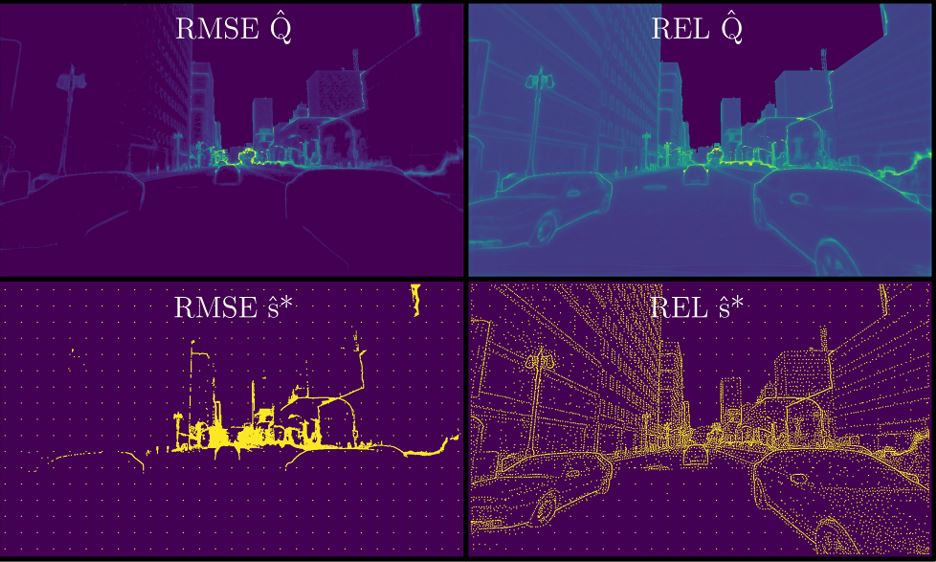Ilya Tcenov, Guy Gilboa, arXiv preprint
Abstract
Recent advances in depth sensing technologies allow fast electronic maneuvering of the laser beam, as opposed to fixed mechanical rotations. This will enable future sensors, in principle, to vary in real-time the sampling pattern. We examine here the abstract problem of whether adapting the sampling pattern for a given frame can reduce the reconstruction error or allow a sparser pattern. We propose a constructive generic method to guide adaptive depth sampling algorithms.
Given a sampling budget B, a depth predictor P and a desired quality measure M, we propose an Importance Map that highlights important sampling locations. This map is defined for a given frame as the per-pixel expected value of M produced by the predictor P, given a pattern of B random samples. This map can be well estimated in a training phase. We show that a neural network can learn to produce a highly faithful Importance Map, given an RGB image. We then suggest an algorithm to produce a sampling pattern for the scene, which is denser in regions that are harder to reconstruct. The sampling strategy of our modular framework can be adjusted according to hardware limitations, type of depth predictor, and any custom reconstruction error measure that should be minimized. We validate through simulations that our approach outperforms grid and random sampling patterns as well as recent state-of-the-art adaptive algorithms.


